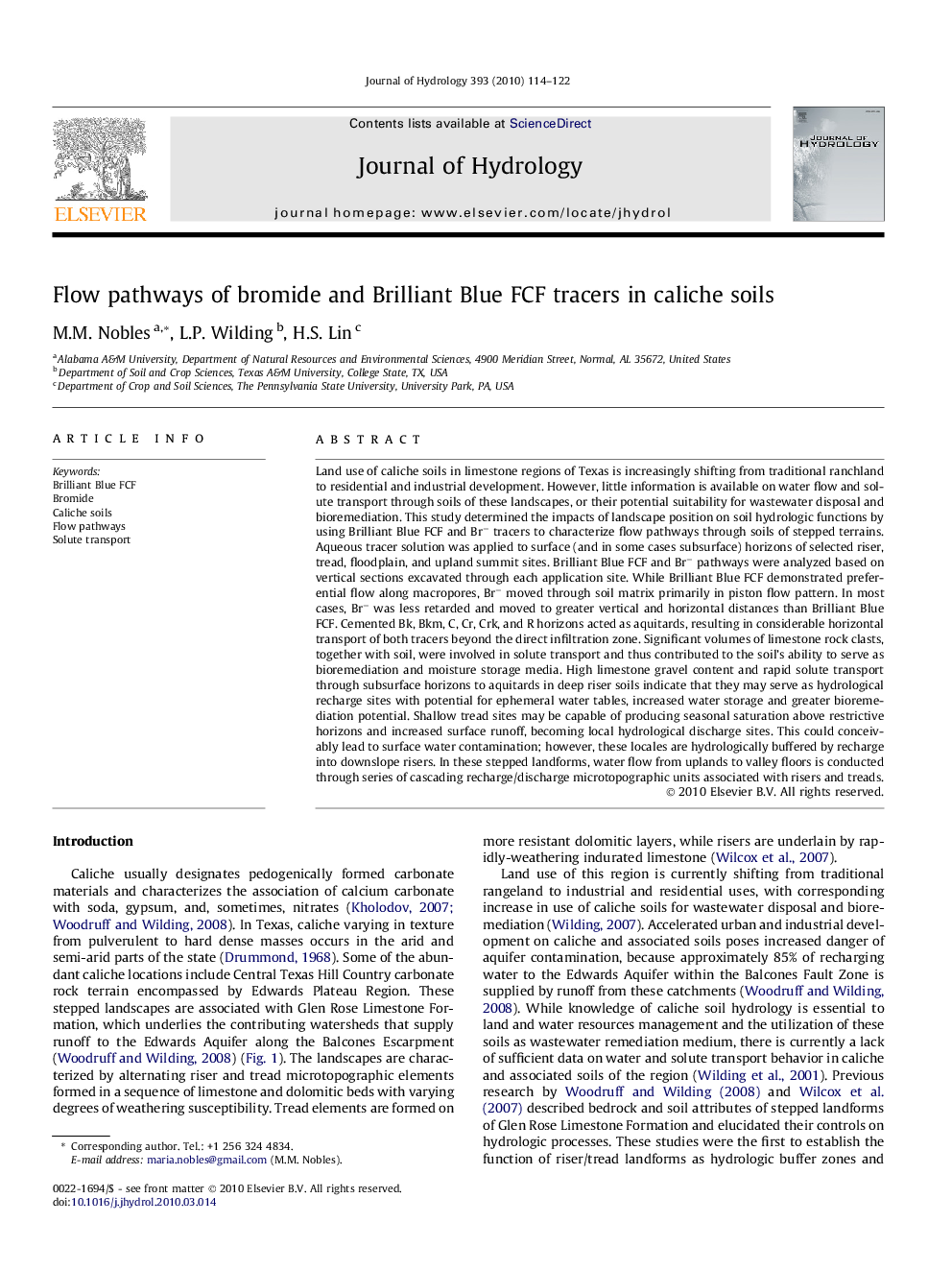| کد مقاله | کد نشریه | سال انتشار | مقاله انگلیسی | نسخه تمام متن |
|---|---|---|---|---|
| 4577958 | 1630042 | 2010 | 9 صفحه PDF | دانلود رایگان |

Land use of caliche soils in limestone regions of Texas is increasingly shifting from traditional ranchland to residential and industrial development. However, little information is available on water flow and solute transport through soils of these landscapes, or their potential suitability for wastewater disposal and bioremediation. This study determined the impacts of landscape position on soil hydrologic functions by using Brilliant Blue FCF and Br− tracers to characterize flow pathways through soils of stepped terrains. Aqueous tracer solution was applied to surface (and in some cases subsurface) horizons of selected riser, tread, floodplain, and upland summit sites. Brilliant Blue FCF and Br− pathways were analyzed based on vertical sections excavated through each application site. While Brilliant Blue FCF demonstrated preferential flow along macropores, Br− moved through soil matrix primarily in piston flow pattern. In most cases, Br− was less retarded and moved to greater vertical and horizontal distances than Brilliant Blue FCF. Cemented Bk, Bkm, C, Cr, Crk, and R horizons acted as aquitards, resulting in considerable horizontal transport of both tracers beyond the direct infiltration zone. Significant volumes of limestone rock clasts, together with soil, were involved in solute transport and thus contributed to the soil’s ability to serve as bioremediation and moisture storage media. High limestone gravel content and rapid solute transport through subsurface horizons to aquitards in deep riser soils indicate that they may serve as hydrological recharge sites with potential for ephemeral water tables, increased water storage and greater bioremediation potential. Shallow tread sites may be capable of producing seasonal saturation above restrictive horizons and increased surface runoff, becoming local hydrological discharge sites. This could conceivably lead to surface water contamination; however, these locales are hydrologically buffered by recharge into downslope risers. In these stepped landforms, water flow from uplands to valley floors is conducted through series of cascading recharge/discharge microtopographic units associated with risers and treads.
Journal: Journal of Hydrology - Volume 393, Issues 1–2, 27 October 2010, Pages 114–122